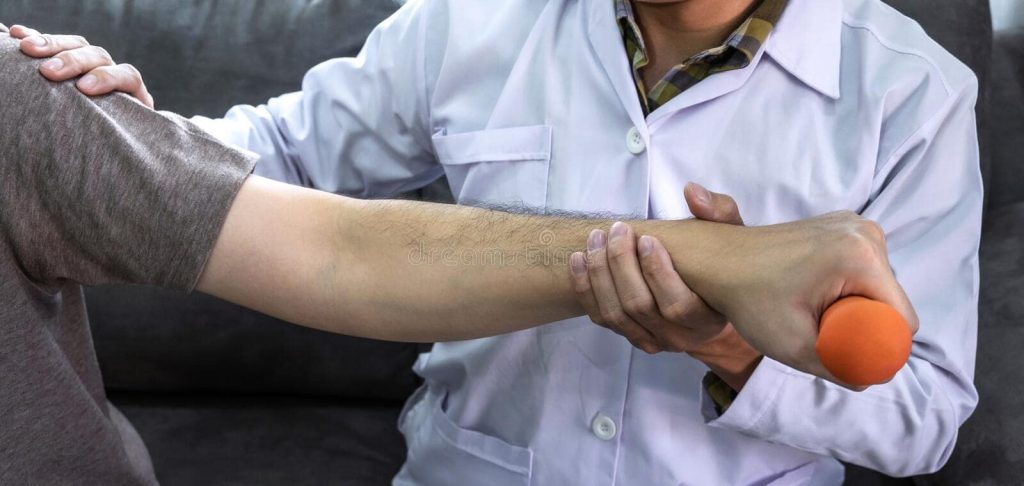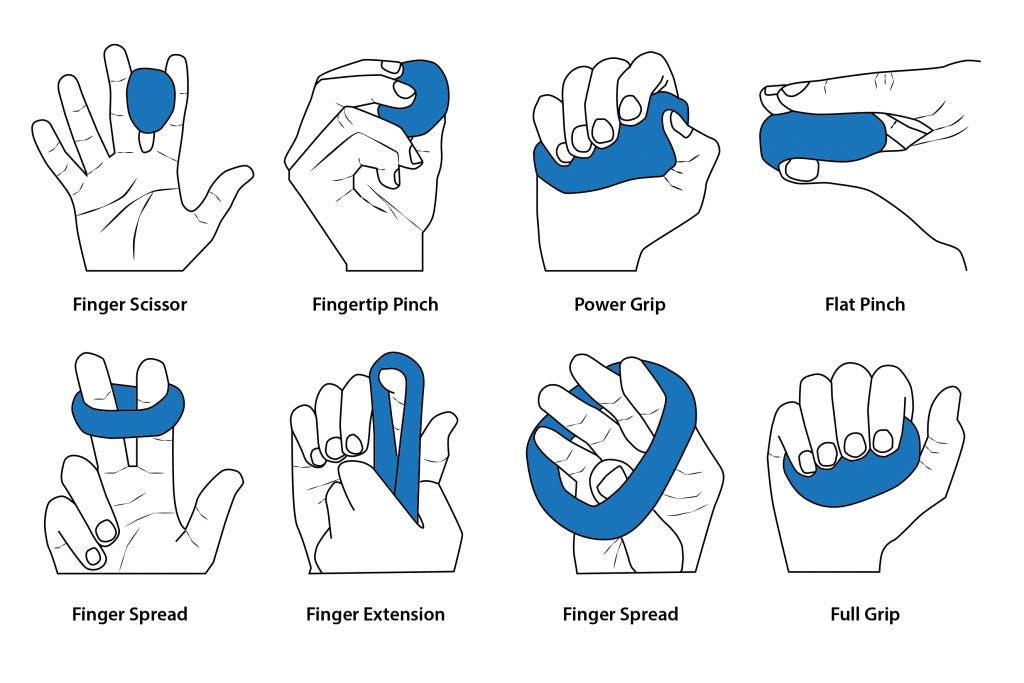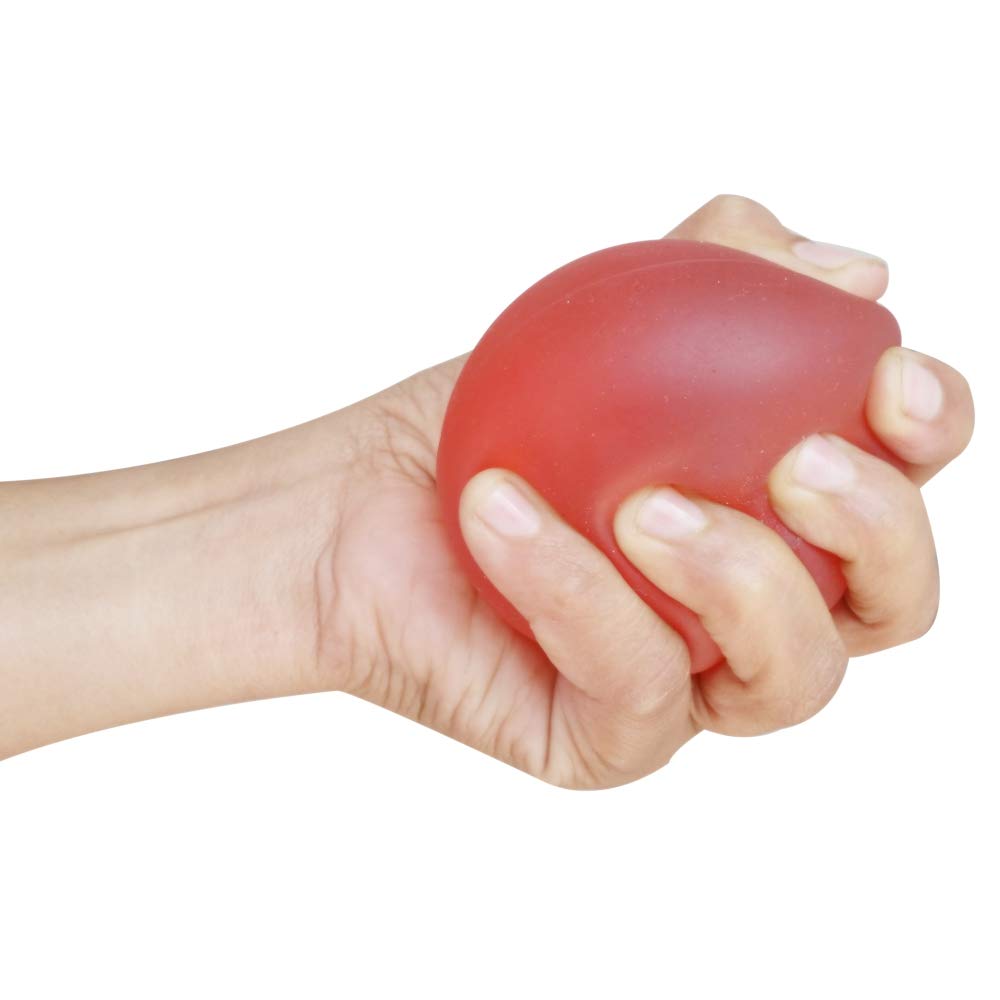
Hand therapy as a specialty is well-established in various countries and others show signs of growth in this particular field. The International Federation of Societies for Hand Therapy (IFSHT), founded in 1989 supports the development of Hand Therapy worldwide. As per 2015 reports, IFSHT has established hand therapy societies across 33 countries. The demand for specialists in hand therapy is growing in demand worldwide as people search for proper rehabilitation treatment after their hand surgery.
The hand is an important part of our body for day-to-day activities. So after hand surgery, it’s important to bring back your hand to full functionality for a normal energetic life. To make that happen it’s very crucial to follow proper hand therapy exercises after surgery under the expertise of a hand therapist. So to take an informed decision, a detailed understanding of hand therapy and its procedure is a must. In this blog, I will be explaining in detail about different Hand therapy exercises, their connected elements, and the steps one should follow after the surgery for a speedy and healthy recovery.
So without wasting much time let’s answer the first question in your mind. What is hand therapy and how it’s done?
What is hand therapy?
Hand therapy involves evaluating and treating injuries or conditions specified on every muscle and joint in between the shoulder, and hand, which includes the shoulder, arm, elbow, forearm, wrist, and hand (commonly known as an upper extremity) with various therapeutic or exercises methods to ensure a faster recovery. In simple words, hand therapy is a form of physical therapy but the former will be focusing on the evaluation and treatment of the upper extremities. Hand therapy includes various rehabilitation treatments such as non-operative, preventative, or post-surgical as the situation demands.
- Non-operative treatments – deal with non-surgical procedures such as splinting & bracing injections, and massage therapy. They are commonly suggested for minor injuries like sprains, small dislocations, or strains in the hands or wrists. But if you have suffered from a traumatic hand injury or non-operative techniques didn’t work, then it’s time to consider surgery.
- Post-surgical treatments – Some common exercises include Tight fist exercise, Finger Finger exercise, Thumb bend exercise, and Wrist stretch exercise. Detailed explanation coming up.
In this article, I will be concentrating on post-surgical hand therapy treatments. These treatments are aimed to provide relief from pain and restore the function of the arm.
Before proceeding to further topics you should know about CHT or Certified Hand Therapist
Who is a Certified Hand Therapist and what does he do?
As the recovery process after the surgery is challenging there is a need for a specialist with knowledge and experience to manage the therapy. The specialist is called Certified Hand Therapist or CHT. CHT is a person with a background in Occupational Therapy(OT) or Physiotherapy(physical therapy)(PT), who has further specialized in the treatment of conditions affecting hands, arms, or shoulders. Don’t get terrified by the names of therapies, I will be discussing how occupational and physical therapy differ in the coming part.
Sometimes you may see occupational therapy more connected with hand therapy because 80 percent of CHT are occupational therapists. Their main role is to restore function and prevent upper limb dysfunction through various rehabilitative methods.
CHT develops the best treatment programs that suit you after consultation with your surgeon or physician. He or she will help you in splinting to immobilize injured parts for faster healing and provides you with further exercise programs to build strength to get back to your daily routine.
What happens in hand therapy?
Hand therapy deals with your therapist analyzing the patient’s condition and structuring a proper treatment protocol with proper goals. Then educating the patient about the recovery process and exercise involved and following the therapeutic sessions as scheduled.
Your CHT set up goals to ensure the recovery process is properly monitored. During your visits, he will be analyzing your progress and make sure you are on the right track. He/she will be checking your motion, strength, and nerve sensation to make sure the healing process is on track and will be continuing with the exercise schedules for the particular day.
- During your first session, usually, your hand therapist will be completely assessing your current condition and the difficulties you face, the past medical history. Then he will be crafting a goal-oriented treatment plan.
- During the succeeding sessions, your hand therapist will familiarize you with the treatment procedures which will help you to relieve your symptoms and helping to restore the normal function of your hand. Also, check your progress to confirm that everything is on track.
The therapy session usually lasts for 1.5 hours and gradually reduces as you show positive results. In addition to your therapy session, your hand therapist also discusses various measures to be taken at home and changes to be made in your lifestyle for a faster recovery.
As your session progress, you may experience pain and discomfort at different stages. But no need to worry, your therapist will guide you through each process with utmost care. The discomfort you face is part of the treatments and is temporary, soon you will be back to your normal and happy life with the help of hand therapy assisted by a Certified hand Therapist.
Before moving further deep into the topic we need to have more clarification on occupational therapy
Now let’s learn more about some of the hand therapy exercises after surgery
Common Hand Therapy exercises

- Finger Tap Exercise – Here place your hand on a flat surface with your palm facing downward. Now raise your thumb slowly, hold for a few seconds and then slowly lower your thumb. Repeat this exercise with each finger in your hand.
- Thumb bend Exercise – First keep your thumb and other fingers straight and close together. Then slowly bend your thumb to reach the base of your little finger. If you are not able to stretch that far, stretch your thumb as far as you can.
- Finger to Finger exercise – Keep your fingers straight and close to each other. Then touch your index finger and thumb to form an ‘O’. Then slowly relax the fingers and now continue the exercise with the thumb touching every finger several times a day.
- Finger Bend Exercise – Extend your fingers and bend each finger at the knuckles one after the other and then relax your fingers. Do this exercise at least 50 times daily to gain muscle strength and range of motion.
- Finger lift exercise – Place your finger flat on the table. Then gently lift each finger. Repeat this exercise 10 – 15 times a day for each hand.
- Wrist rotation – It’s a simple and common exercise where you first extend your arms and then rotate your palm by keeping it at a 90-degree angle with the forearm.
- Tight Fist Exercise – At first try to clench your fist tightly as much as you can. Hold it for a few seconds Then slowly straighten your fingers and then stretch them by spreading your fingers as far as you can.
- Wrist stretch Exercise – Support your forearm with one hand and move the wrist forward and backward as much as possible about 10 -15 times. If you feel severe pain during the process consult with your doctor before resuming the exercise.
In addition to the above exercises, there are different types of hand Therapy exercises, especially the called hand therapy ball exercises, which are commonly suggested by a hand therapist and involve different exercises with balls to improve the mobility and strength of the hands.
So before clarifying your further doubts let’s have a quick glance at various Hand Therapy Ball Exercises and their effectiveness.
Hand Therapy Ball Exercises

- Power grip – Here you will be placing the therapy ball at your palm and then squeezing it with your fingers as you try to clench your fist. Then slowly release the ball completely and open the fingers as wide as possible. This exercise helps to strengthen your grip so that it is easier to grab, and pick objects.
- Pinch – Here you will be pinching the therapy ball by keeping your fingers and thumb straight in such a way that the ball rest between your thumb and the fingers. Try to pinch the ball with strength and for more time till you feel uncomfortable. This help to strengthen the muscles not only in the fingers but also in the wrists.
- Thumb Flexion and Extension – Place the ball in the flat palm of your hand and then use the thumb to roll the ball up and down your palm. As you could notice this exercise will be concentrating on strengthening the muscles and mobility of the thumb.
- Table Roll – Place the ball on the table. Then keep the palm of your hand (as flat as possible) on top of the ball and roll the ball from the base to your fingertip. This exercise helps the patient to get control over his hand because too much or less pressure makes the ball hard to move.
- Thumb Roll – Place the therapy ball on your palm by keeping the palm as flat as possible. Now roll the ball in a circle in your palm with your thumb. Like Thumb Flexion & Extension exercise this particular procedure will be concentrating more on improving the control and strength of the thumb.
- Finger Squeeze – Place the therapy ball between two fingers. Then squeeze the ball with your fingers and slowly release it. Repeat the exercise with different combinations of fingers. Sometimes you may feel had to squeeze the therapy ball with your ring and little finger, but try to do the exercise without skipping them.
Your hand therapist will be customizing your therapy session according to your condition and as the session starts you will be visiting the hand therapist 3 – 4 times per week. Over time as your hand recovers, the hand therapist will shift your program accordingly and visits will gradually reduce. The entire process takes time. As you become familiar with the above exercises your therapist will help you schedule a home exercise program so that you reduce the frequent visits to hospitals. As you move to exercise sessions at home you should stick to the exercise programs assigned by your therapist. Along with which certain home treatment methods will be prescribed by your therapist. Let’s look at what those are.
Home care methods after Hand Therapy session
- Ice the area – As the healing process starts you may feel pain in the treatment area. So simply applying ice in the area to cool and subdue the pain.
- Avoid smoking and the use of alcohol as it could slow the recovery process.
- Drink water – As you heal drinking the right amount of water is necessary as it will help to process the toxins in your bloodstream.
So with that being discussed, I hope you got a better understanding of various therapeutic interventions and home care treatment methods post-hand surgery and how it’s helpful in restoring the mobility and energy of your hand. You should gradually increase the resistance in each exercise as your muscle gets stronger. In the case of ball therapy if someone needs to build good strength he/she can gradually use a therapy ball which is slightly harder than the normal one.
One may not be requiring all these exercises, so the type of exercise someone should take up depends on the injury or wound the person had suffered. Don’t worry your hand therapist knows which exercise suits you the best.
With a good understanding of hand therapy exercises, it’s time to address a simple but complex doubt.
How long the hand Therapy takes to work?
One of the common questions among people is ‘how long do I have to take up the therapy? Well, there is no specific answer to that. The recovery depends on different factors such as the condition of the patient being treated, the individual’s healing rate, and their medical condition. It may take more time for an old person to heal than a young one. Don’t worry, your Hand therapist will be tracking your progress and updating you. He/she will be giving you recommendations as needed. One important thing to remember is that never stop your hand exercises unless your hand therapist asked you to. You may be able to do your daily activities fluently but consult your therapist and take action according to his advice.
Conclusion
I hope through this blog I was able to give you a clear understanding of various hand therapy exercises and other related details regarding the therapy. Hand therapy could make a huge difference in one’s life by helping them come back to life with proper rehabilitative treatments. Your hand therapist will assist you in choosing the proper treatment meant for your condition after consultation with your doctor. Hand therapy ball exercises are more commonly suggested by hand therapist as it works well to build the strength of your hands. So it’s crucial to follow the steps and exercises assigned by your hand therapist. Hand therapy exercise takes time to see the results. Some may recover faster for others it may take some time. But it’s ok. Don’t compare yourself with others. Your job is to follow the process assigned to you by the therapist and today or tomorrow you will see the result. Within no time you will be back to your spirited life.
